BEAM Recovery Aminos are a full-spectrum essential amino acid (EAA) formula designed to improve recovery with added ingredients like tart cherry and Aquamin!
You can Be Amazing, but it's a bit more of a challenge if you're sore and cranky for the majority of your athletic life! This is why Michael Yewdell and his team at BEAM put together a strong intra-workout / recovery supplement in BEAM Recovery Aminos.
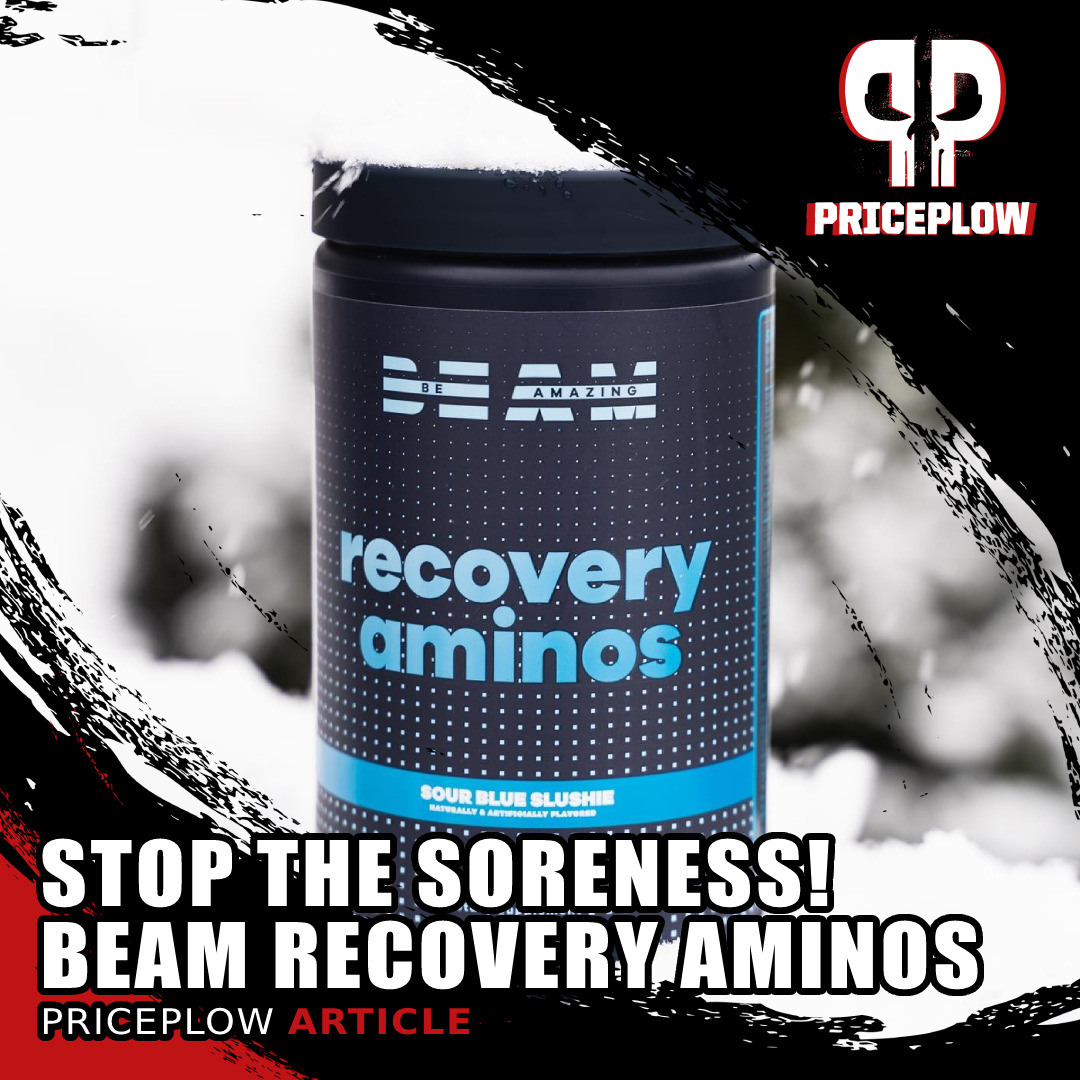
Stop the soreness! BEAM Recovery Aminos has a full-spectrum EAA/BCAA blend with added ingredients geared towards recovery
BEAM Recovery Aminos: Amazingly Not-So-Sore
This isn't a brand new supplement, but as new flavors like Sour Blue Slushie have joined the menu, it's one we keep going back to on those "ugly" days. BEAM Recovery Aminos includes the following to keep your muscles from feeling torn to shreds:
- Full-spectrum BCAA/EAA blend with high doses of leucine-loading threonine and phenylalanine as well as anabolic methionine
- Aquamin for better hydration
- Added recovery antioxidants in tart cherry, grape seed extract, and wild blueberry
- Targeted vitamin and mineral blend to prevent oxidation
We dig into the hefty 16 gram scoop below, but first, check the flavors available through PricePlow's price comparisons:
Be Amazing Recovery Aminos – Deals and Price Drop Alerts
Get Price Alerts
No spam, no scams.
Disclosure: PricePlow relies on pricing from stores with which we have a business relationship. We work hard to keep pricing current, but you may find a better offer.
Posts are sponsored in part by the retailers and/or brands listed on this page.
This area is reserved for Team PricePlow's upcoming videos.
Subscribe to our channel and sign up for notifications so you catch it when it goes live!
BEAM Recovery Aminos Ingredients
In a single one scoop serving of BEAM Recovery Aminos, you get the following:
-
Branched-Chain Amino Acid (BCAA) 3:1:1 Blend – 5,000 mg
Leucine, isoleucine, and valine are known as the branched-chain amino acids (BCAAs), so-called because the diagram of their chemical structure resembles a tree with branches.
BCAAs stand out from other aminos because of their uniquely anabolic effects. They're usually taken immediately before, during, or after a workout so that their release into the bloodstream occurs during the "anabolic window" that begins with the initiation of a workout.
The basic reason why BCAAs work to build and preserve muscle is that leucine is the primary activator of the mammalian target of rapamycin (mTOR),[1-4] which initiates muscle protein synthesis in the human body.
These three aminos resemble each other because they are isomers of each other,[5,6] meaning that they have the same chemical formula but subtle differences in structure. As you might expect, this means they have similar, but complementary effects.
The leucine content of a BCAA is usually disproportionately high, as we see here, because of leucine's uniquely effective role in the mTOR pathway.[2-4,7-9] Nonetheless, all three BCAAs have documented anti-catabolic properties,[10-12] and increase athletic endurance[13-15] as well.
Moreover, our body's requirement for leucine, an essential amino acid that we must obtain from food or supplements, goes up significantly as we age.[16]
5g is the go-to dose for BCAAs, so we're off to a good start in this heavy-handed scoop.
-
L-Lysine – 900 mg
Lysine is an important carnitine precursor,[17] which means we definitely want to get a lot of it because carnitine confers big benefits on human health. Lysine also aids with muscle growth and recovery following exercise, as has been shown in animal models studying lysine supplementation.[18,19]
The essential amino acids are in red. Leucine, Valine, and Isoleucine are the three Branched-Chain Amino Acids.
Lysine is also important for absorbing calcium[20] and producing collagen,[21] which means that the EAA is crucial for ensuring the structural integrity of, well, basically your whole body. Without enough calcium your bones won't be as strong as they could be, and the tendons that hold your bones together consist of collagen. Bones and tendons take a lot of punishment during intense cardio and weightlifting, so if you're training hard, a little lysine supplementation to help them repair is definitely a good idea.
Besides absorbing calcium, lysine also helps direct where that calcium is deposited,[21] much like vitamin K2. You don't want calcium in your blood vessels where it can contribute to cardiovascular disease: you want it in your bones, which is where it belongs. And lysine will help your body achieve that.
We would like to conclude this section by emphasizing lysine's status as a carnitine precursor, because we at PricePlow love carnitine and write about it all the time. If you're looking for a good discussion about carnitine and its potential, check out our long-form article, L-Carnitine is Underrated. New Meta Review Reminds Us Why.
-
L-Threonine – 825 mg
Threonine is one of the precursors to glycine,[22] an incredibly important essential amino acid with tons of health benefits.
Some intriguing research from animal models suggests that threonine might have anti-obesity effects by regulating lipid metabolism.[23] Threonine also helps maximize muscle growth,[24] so taking a little extra can help you avoid bottlenecking your gains.
Threonine is one of the EAAs (phenylalanine is the other) that can improve leucine's uptake when used alongside the BCAA[25] -- one of the many reasons we like adding EAAs to BCAAs. Here we have quite a nice dose, and the same goes for the next one:
-
L-Phenylalanine – 675 mg
Like threonine above, phenylalanine also promotes better leucine uptake,[25] so we're thrilled that it's also high up on the label. Phenylalanine is one of the precursors to tyrosine.[26]
Tyrosine is among our favorite amino acids here at PricePlow because it triggers the production of important neurotransmitters, including dopamine, epinephrine and norepinephrine.[27]
But more importantly for a recovery formula, phenylalanine levels are consumed during exercise and recovery from exercise,[28] restoring those levels once you've finished your workout is just part of the full recovery process.
-
Aquamin – 500 mg
Taking a brief pause from our EAAs, Aquamin is a multi-mineral complex sourced from seaweed that consists mostly of calcium and magnesium.[29]
The real question, of course, is whether Aquamin is efficacious enough to meet the expectations we have when supplement with these minerals—and the answer appears to be yes. Researchers have done a couple of studies on Aquamin specifically, finding that it does indeed improve bone and joint health.[29,30]
Aquamin also contains trace amounts of minerals like boron and manganese, which have also been shown to improve joint and bone health.[31]
There's also a small body of evidence that shows boron has the ability to decouple steroid hormones from the transporter sex hormone binding globulin,[32] thereby possibly raising blood levels of free testosterone,[33] the biologically active form. However, research on this subject remains inconclusive and should be considered preliminary.
The big picture here is that because electrolytes are lost during exercise, we want to replenish them as quickly as we can in order to optimize recovery.
-
L-Tryptophan – 350 mg
Tryptophan is another essential amino acid and also a serotonin precursor. At the appropriate point in your circadian rhythm, the EAA will convert into melatonin,[34] the hormone we naturally produce in response to darkness.
It's known for sleep, given how much it's mentioned on Thanksgiving, but it doesn't work instantaneously as the media suggests. But if you're training hard, especially in the late afternoon or early evening, some tryptophan supplementation may later provide you with the tools to fall asleep faster and sleep well, which translates into a boon for exercise recovery.
The pathway from tryptophan to melatonin is, briefly:
- Conversion of serotonin L-tryptophan to 5-hydroxytryptophan (5-HTP)
- Conversion of 5-HTP into serotonin via the enzyme aromatic L-amino acid decarboxylase
- Conversion of serotonin to N-acetyl-serotonin via the enzyme hydroxyindole-O-methyltransferase
- Conversion of N-acetyl-serotonin to melatonin.[35]
Going through tryptophan depletion is generally a bad experience,[36] and BEAM is trying to prevent that with a decent dose in here.
A feel good, recovery amino - just like the product states.
-
Tart Cherry Fruit Extract – 300 mg
The juice from tart cherries have been investigated as an anti-inflammatory compound and preliminary studies indicate that it can in fact promote recovery and decrease muscle pain following intense exercise.[34,37-39] This is probably because tart cherry is extremely high in antioxidants and specifically anthocyanins, which have been identified in the research literature as powerful anti-inflammatory compounds.[35]
-
L-Methionine – 225 mg
Methionine is an essential acid with antioxidant properties that enable it to defend your body from the effects of stress,[40] including the type induced by exercise. Excess ingested methionine is eventually converted into taurine and cysteine, which have both been shown to improve athletic performance and aid recovery.
Methionine is also needed for the production of carnitine,[41] which we discussed above. Researchers consistently observe a positive correlation between the amount of methionine a person consumes and his or her blood carnitine levels.[41]
-
White Tea (Camellia sinensis) extract – 100 mg
White tea is, like its famous cousin green tea, brewed from the leaves of the tea plant, Camellia sinensis. However, whereas green tea leaves are harvested at the plant's peak of maturity, white tea leaves are harvested when the plant is very young. This gives it an antioxidant profile distinct from that of green tea.
Much like green tea extract, white tea leaf extract has been shown to increase metabolic rate and inhibit the growth of fat cells, largely because of epigallocatechin gallate (EGCG),[42,43] a much-studied antioxidant that's also found in green tea.
This is a unique addition to an amino supplement, but it makes sense - antioxidants for improved recovery, hence the name.
-
Grape Seed Extract – 75 mg
Grape seed extract (GSE) is rich in proanthocyanidins, which have a number of positive effects on human health through their interaction with endothelial nitric oxide synthase (eNOS), an enzyme that synthesizes nitric oxide. GSE can increase eNOS expression via kinase B (Akt) phosphorylation.[44]
According to a 2016 meta analysis, GSE significantly lowers blood pressure and promotes healthy circulation,[45] which is definitely going to help with recovery, since recovery depends largely on the efficient removal of lactic acid and the delivery of nutrients to damaged tissues. Other identified effects of GSE include cognitive benefits, lower levels of inflammation and blood sugar, and improvements to organ function.[46-49]
-
L-Histidine – 25 mg
Histidine is a necessary precursor for carnosine, a molecule that increases muscular endurance and speeds recovery by buffering lactic acid.[50]
Some research from animal models suggest that high levels of histidine can actually boost muscle synthesis above baseline rates.[51] So taking a histidine supplement could help you even if you're not deficient.
-
Wild Blueberry Fruit Extract – 25 mg
Blueberry extract is similar to tart cherry's antioxidant profile and overall effects. Rich in anthocyanins, it has been shown to speed up recovery[52] and reduce general inflammation and oxidative stress.[53]
-
Theobromine – 20 mg
Here's a unique inclusion to an amino supplement!
Theobromine is a methylxanthine, just like its famous relative, caffeine. It has the ability to decrease appetite and increase energy levels,[54,55] it helps blunt post-exercise fatigue by crossing the brain-blood barrier and inhibiting phosphodiesterase and adenosine,[54] which is the same mechanism of action behind most of caffeine's effects. However, unlike caffeine, theobromine has a significantly longer half-life, so you won't feel withdrawal effects as it wears off.
Also, like caffeine, theobromine can potentially help encourage a lean body composition by increasing the action of cyclic adenosine monophosphate (cAMP),[56] which speeds up fat burning in the body.[57] However, this isn't a large enough dose for us to noticeably burn fat, but it may help blunt any post workout crash.
-
Other ingredients
Besides the ingredients discussed above, we also have a generous serving of vitamins C and E, which probably need no introduction as anti-stress and antioxidant compounds.
For instance, scientists have documented vitamin C's ability to reduce muscle damage markers and soreness thanks to its ability to reduce oxidation.[58,59] There's also a study where vitamin C led to better endurance in overweight dieters running caloric deficits.[60] In addition, having vitamin C deficiency can markedly reduce performance,[61] so it's good to avoid that.
BEAM Recovery Aminos also has a little bit of iron, which is a good idea since iron is one of the many minerals that is eliminated from the body during exercise.[62]
Overall, the angle here is clear - a ton of ingredients to keep your body from feeling utterly destroyed. Don't get us wrong -- if you're training hard, you're still going to get sore. But we posit that all other things equal, you'll probably feel less sore.
Flavors Available:
This is a strong, well-dosed amino acid profile, so it's going to need some strong flavor systems to power through:
Takeaway: BEAM Recovery Aminos gets you back on track
When you weight train, you actively tear down your muscles. Post-workout inflammation is a good thing, but it's great to give your body the tools it needs to rebuild and repair. BEAM Recovery Aminos does that, and includes ingredients that can help you from feeling forever drained from that one last set.
Worth mentioning, this is a vegan-friendly supplement that is naturally colored, so you won't find any artificial dyes inside. It is sucralose-sweetened though, and this shouldn't be surprising given such a monster EAA formula.
So if you're finding yourself sore all the time, it could be time to consider throwing some BEAM Recovery Aminos at the problem... and some Whey Protein may not hurt either!
Be Amazing Recovery Aminos – Deals and Price Drop Alerts
Get Price Alerts
No spam, no scams.
Disclosure: PricePlow relies on pricing from stores with which we have a business relationship. We work hard to keep pricing current, but you may find a better offer.
Posts are sponsored in part by the retailers and/or brands listed on this page.
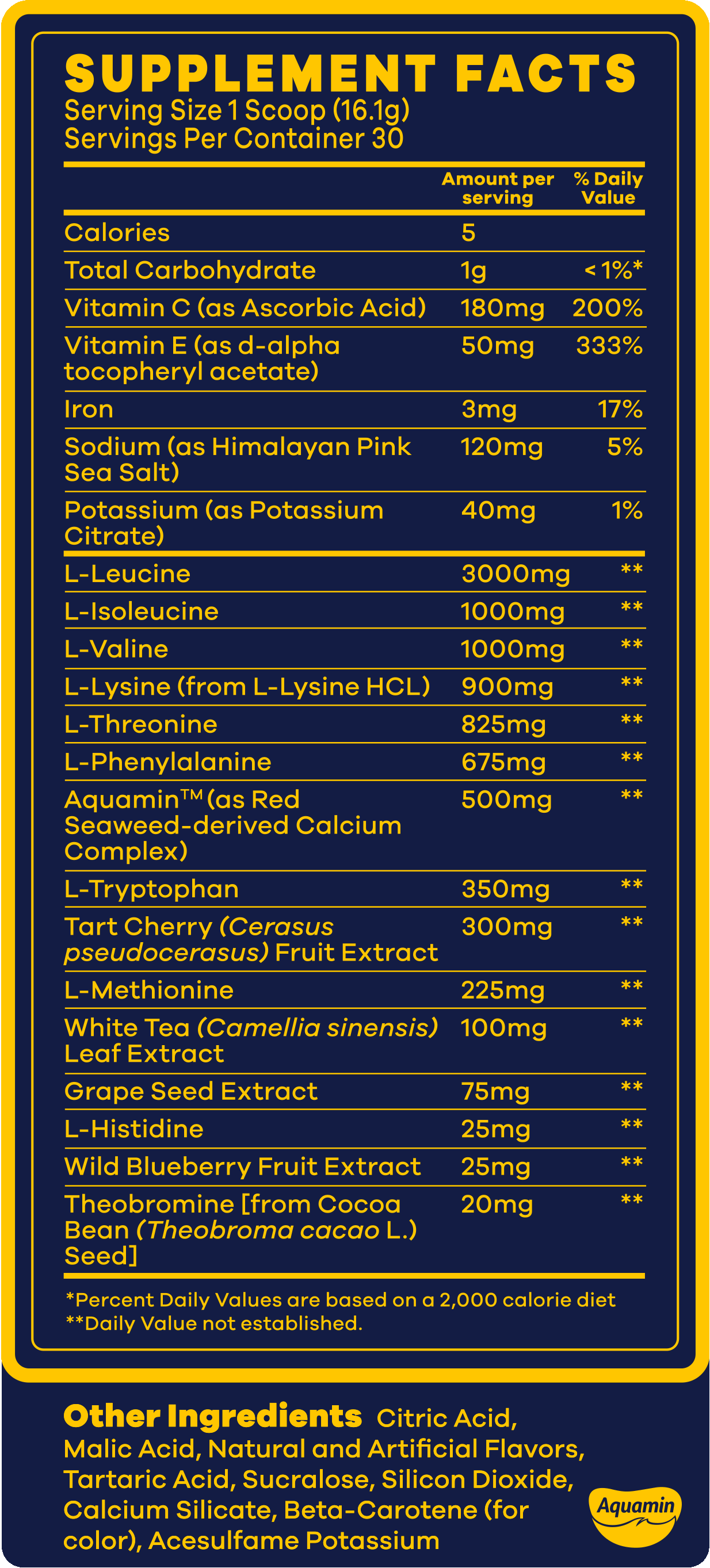
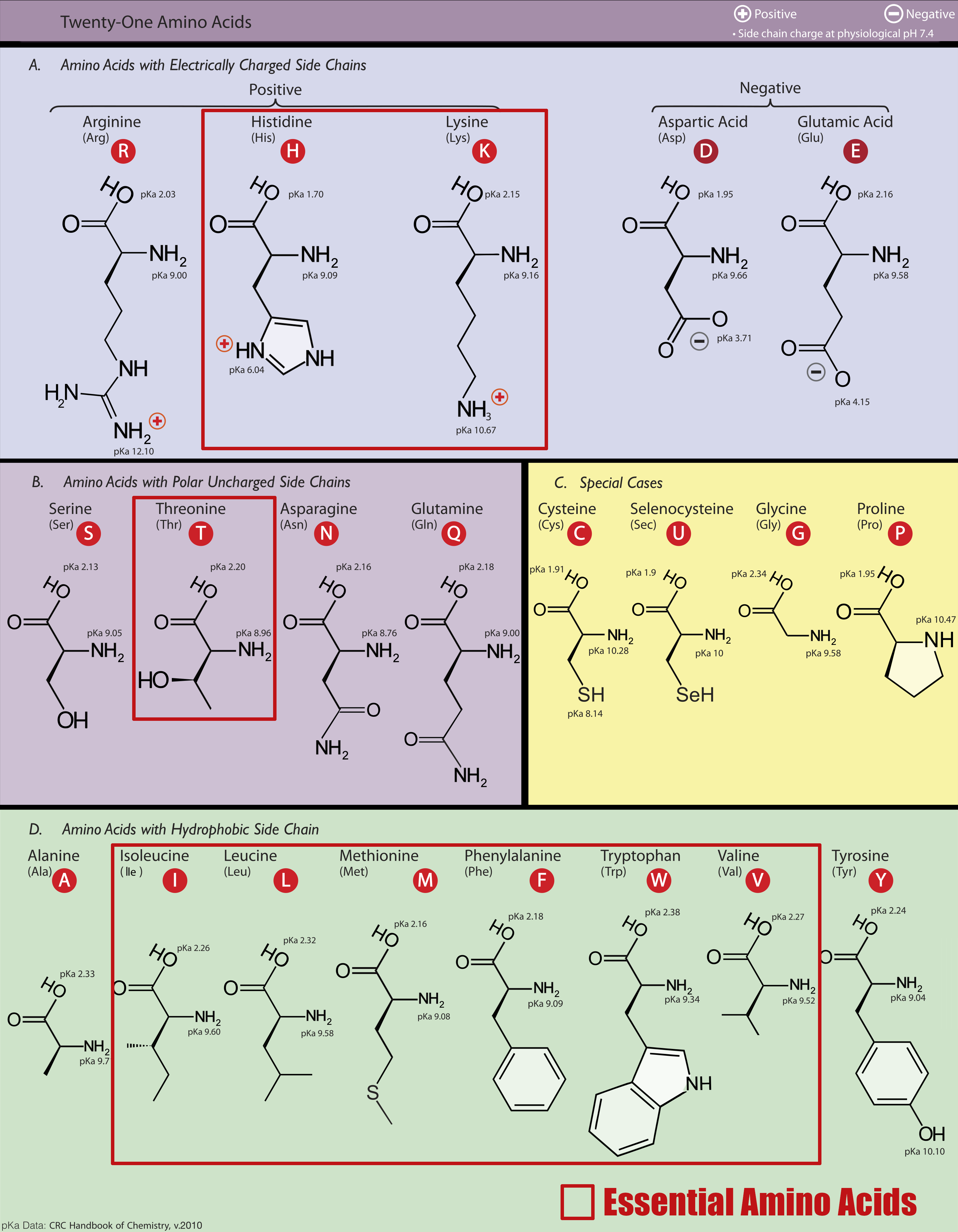


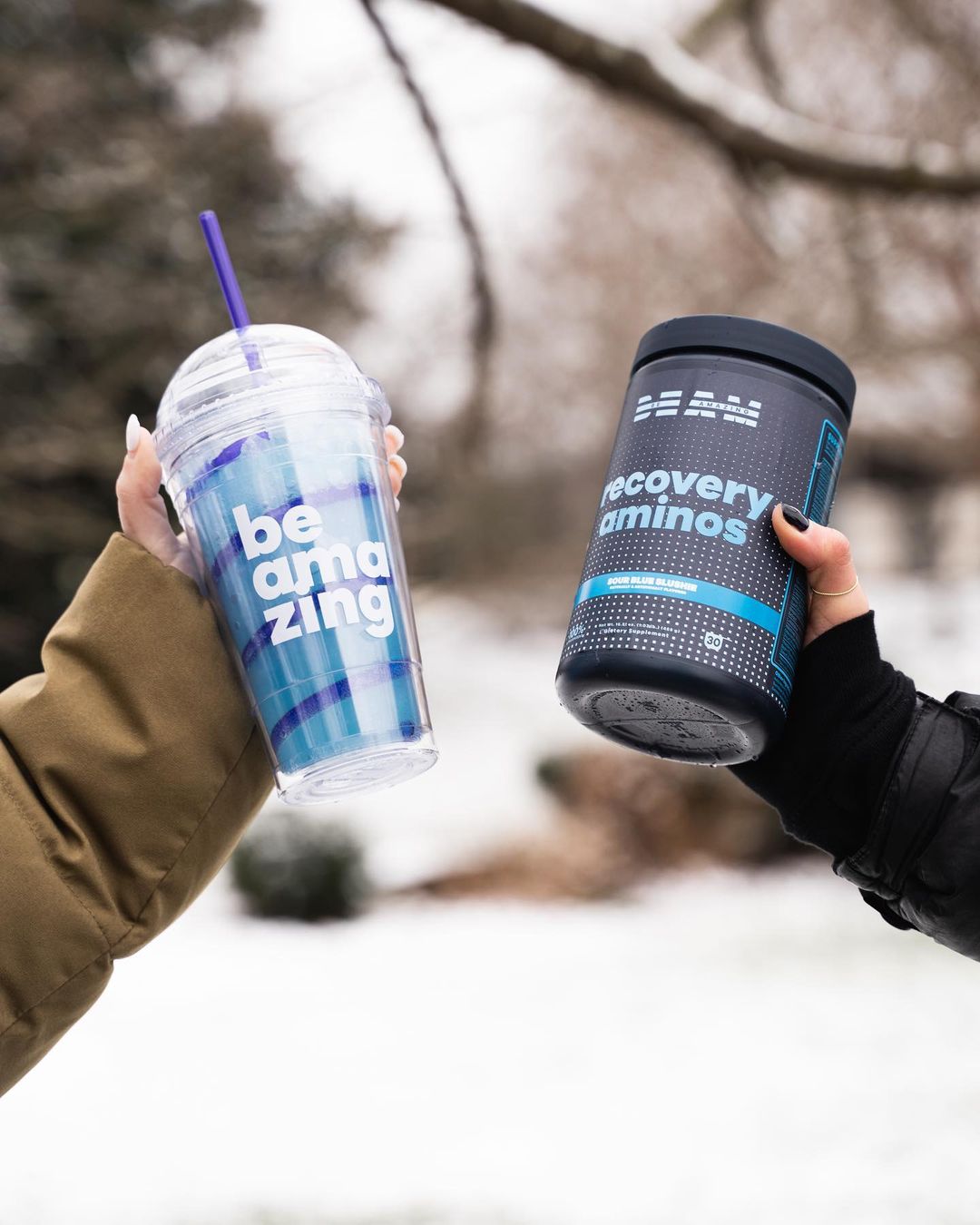

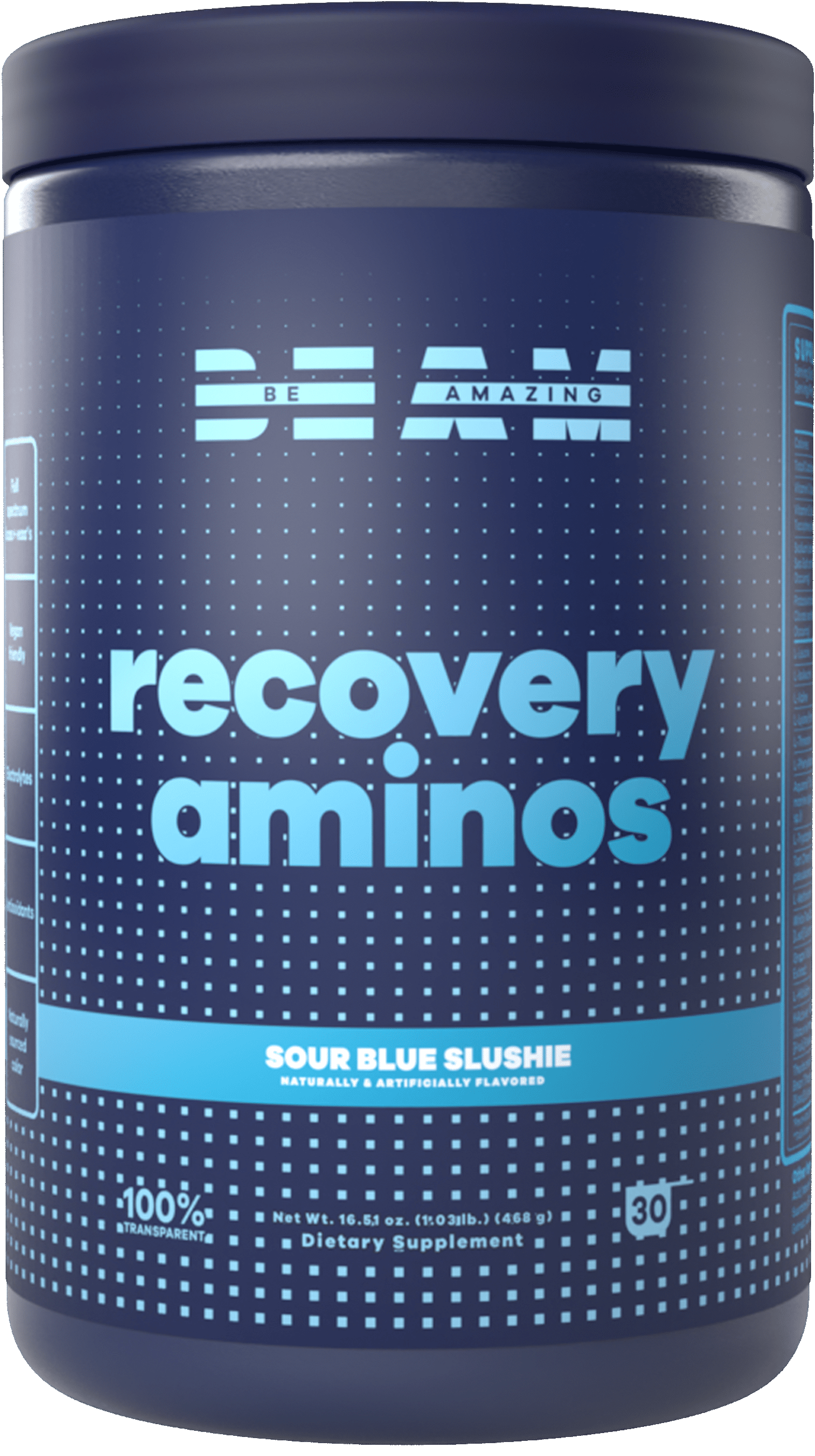


Comments and Discussion (Powered by the PricePlow Forum)